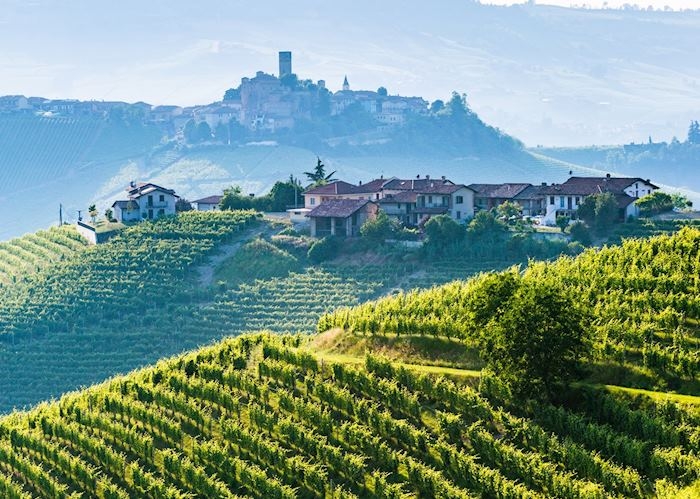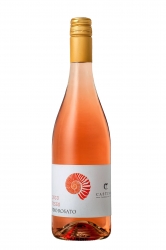Wines
Moscato d'Asti La Mandorla docg
The cultivation of the Moscato wine in the Asti area dates back to ancient times. In the year 13th century its name appeared in the "Statutes" of the commune of Canelli. This wine is characterised by its class and its spontaneous liveliness, its secret lies in keeping the grapes' original flavour intact and fragrant. Said qualities, which make this wine the only one of its kind in the world, are heightened by means of an extremely slow fermentation at a controlled temperature. An outstanding wine to pair numerous desserts.
| Species of wine: | 100 % Moscato of Asti |
| Vine-training system: | Guyot |
| Vinification: | without skins, very slow, at a controlled temperature with particular doses and choices of yeasts. |
| Alcoholic content: | developed 5.5%; overall 12% (vol.) |
| Colour: | More or less intense straw-yellow or golden-yellow colour. |
| Bouquet: | delicate but intense, fragrant, typical of moscato grapes. |
| Taste: | sweet and full-bodied but extremely velvety, aromatic and characteristic. |
| Best serving temparature | 8 - 10 C |

Castino
Ours is a winery that handles the entire cycle: vineyards, grapes, the vinification and ageing cellars. We always pay the greatest attention to every productive phase so as to ensure and guarantee the quality of all the wines we produce. Our estate does not cover a vast area, and this fact enables us to tend our vineyards and follow each and every vine-growing phase in the same way as has been done for generations in our family, a family that lives on and for its vines, running the risks and facing the difficulties that are inherent in any farming work, but in the certainty of working in the right way, without delegating others to handle the most important phases for the quality of the wine.

Piemonte
From Asti Spumante to Barolo, the wines of Piedmont are among Italy’s most prolific and best rated. The region’s pedigree is apparent in its 58 DOC and DOCG zones, and although it is only the sixth largest producer in terms of volume, it has the highest percentage of classified wines in all of Italy. No IGT wine area is identified. This westerly region that borders with Switzerland and France is influenced by the Alps and Apennines (the name Piedmont means "foot of the mountain") and its seasons are very distinctive. Hot, dry summers, cold winters, and temperate springs and autumns are common with occasional fog during harvest time.
Undoubtedly it is the red wines that lead the way in terms of quality and cellaring potential with wines made from the noble Nebbiolo grape. The DOCGs of Barolo, Barbaresco, Gattinara, Ghemme and Roero all represent the grape at its finest: they are complex, alluring wines with extraordinary depth and great ageing potential. Barolo ("king of wines and wine of kings") is made in the Langhe hills with its output of 6 million bottles a year far exceeding that of Barbaresco at less than 2.5 million.

Related Wines

Arneis Roero La Cresta docg
A vine of extremely ancient origins rediscovered in the last
View info
Barbera d'Asti Del Fan docg
Of very ancient origins, it is a kind of vine that gives an
View info
Rosato - Pocorosso igt
Collezione Fossili: Our Pocorosso is obtained from a selecti
View info
Chardonnay Langhe Bianco doc
Fresh, fruity wine made from grapes from the youngest vineya
View info
Barbera Superiore l'Antica docg
Full body wine, warm and with a good persistence
View info